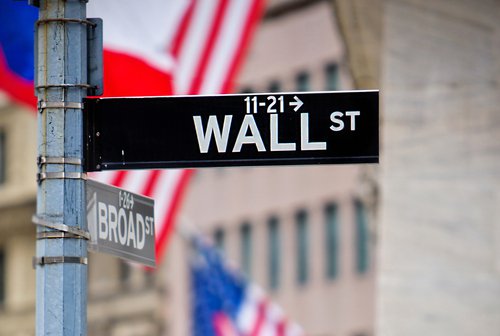Wall Street reform bill passes, derivatives addressed

Wall Street reform passed the Senate last night 59 – 39, with four Republicans voting across party lines, including the newest member of the chamber, Scott Brown (MA). The reasons necessitating the reform ought to be obvious by now. Our economic recession has headlined news outlets for nearly two years.
At first, the housing crisis was blamed (particularly, the subprime market, which defaulted at only $1.3 trillion… read on for clarification of “only”). Recipients of risky loans were actually personally blamed on national television, not unlike what Greek citizens are enduring today.
This is the stomach-turning truth though: predatory lenders trading financial instruments called derivatives have overturned the world economy. And they don’t just prey on individuals. In fact, their prized kill has always been lending to governments. Citizens of the victim administrations suffer loss of social programs due to extreme austerities.
In 1966, Carol Quigley wrote that the “dominance of investment bankers was based on their control over the flows of credit and investment funds in their own countries and throughout the world. They could dominate the financial and industrial systems of their own countries by their influence over the flow of current funds though bank loans, the discount rate, and the re-discounting of commercial debts; they could dominate governments by their own control over current government loans and the play of the international exchanges.” (Tragedy & Hope)
This domination of bankers has played a major role in worldwide suffering. Addressing the issue deserves applaud in itself. The reform passed sounds promising. Still, as Americans, we have grown accustomed to earmarks and loopholes that deteriorate our legislation. Unfortunately, most go unnoticed for quite some time after the bill is passed.
According to the Huffington Post, the “bill that passed the Senate includes provisions detested by the biggest Wall Street banks that would prevent them from trading in derivatives - the economic time bombs that were at the center of the 2008 financial collapse.” It also imposes “new restrictions on credit rating agencies, limits fees that credit card companies can charge to merchants, and forces big banks to maintain higher capital requirements.” It’s hard to complain with this description; seems to be exactly what we need and want. However, time will tell, as some argue that there are massive loopholes that will enable bankers to continue risky derivative trading.
In the US, an estimated $24 trillion will be required by taxpayers to aid Wall Street. To borrow an analogy made by Rep. Darrell Issa: "If you spent a million dollars a day going back to the birth of Christ, that wouldn't even come close to just $1 trillion -- $23.7 trillion is a staggering figure." The Huffington Post reports: “According to the Office of the Comptroller of the Currency, the nation's five largest commercial banks held 95 percent of the $291 trillion derivatives portfolio of the country's 25 largest bank holding companies at the end of the first quarter. More than 90 percent of those derivatives were in unregulated trading.” In order for this market to exist, gambling laws literally had to be re-written. This fact should serve to define the market as an experiment in “casino-capitalism,” to borrow the author’s term.
Last June, a letter was sent to the G20 from the “Act Independent” organization. Derivatives, which “are financial instruments based on other financial instruments – paper based on paper,” were estimated to represent a bubble of $1.5 quadrillion dollars, and the letter begged for responsible world leaders to freeze the market for the duration of the crisis. (It should be noted: with the passing of this reform, Obama fulfilled an obligation made to the G20, ahead of schedule. Europe has yet to do so.) Others have estimated the derivatives market at $500 trillion to $1 quadrillion, or 1,000 trillions of dollars. World Net Daily estimates at least a $600 trillion bubble, pointing out that “even a 10 percent default in derivatives would equal world GDP.”
This isn’t the first time risky bankers jeopardized the health of our economy. FDR’s response to the Great Depression included the Glass-Steagall Act, a banking law that was repealed during the Clinton administration. For those unfamiliar with the Act, it separated investment banks from commercial banks. The Act also provided for the Federal Deposit Insurance Corporation (FDIC), which allowed the government to guarantee the safety of deposits in member banks. This insurance plan did not cover investment banks. When Clinton passed the Gramm-Leach-Bliley Act (GLBA) (also known as the Financial Services Modernization Act of 1999), he did not repeal FDIC. Most would agree that we, the taxpayers, do not want an insurance plan provided by the government to speculating bank investors. By the turn of the millennium, FDIC insured deposits, for the first time since 1933, that could be invested in risky markets.
Perhaps derivatives were illegal between 1936 and 1983 for a reason. This law was repealed by the Futures Trading Act of 1982. The Savings and Loan (S&L) crisis soon followed.
In 1994, Orange County suffered a financial meltdown thanks to derivatives. Business Week encouragingly noted: “The meltdown also could invite an era of far more intense regulation in both the municipal and derivatives markets--both of which, until now, have largely avoided Washington's gaze.”
Fifteen years later, at least we can say we’re moving in the right direction. Then again, time will tell…




